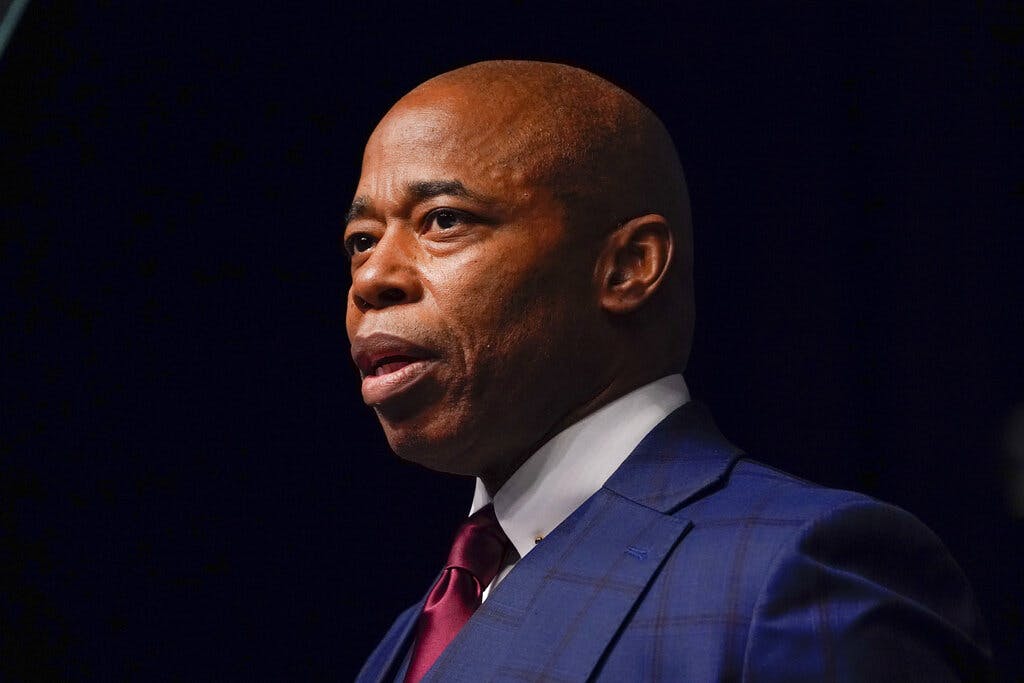With Crime Way Up, Mayor Adams Puts His Version of Broken Windows to the Test
The approach to subway safety lends key insights into his philosophy for policing in New York City.

In a test of Mayor Adams’s philosophy of criminal justice, he and the NYPD have unveiled a de facto return to broken windows policing in New York City, with the subways set as the front line in the fight against crime and disorder.
“If we start saying it is alright for you to jump the turnstile we are creating an environment where anything and everything goes,” Mr. Adams said this week.
What the mayor is signaling here is a return to “broken windows,” policing, which argues that “at the community level, disorder and crime are usually inextricably linked, in a kind of developmental sequence,” according to a seminal article on the topic published in the Atlantic in 1982.
The broken windows philosophy was pioneered by two researchers, James Wilson and George Kelling, who believed that “police patrols are the key to order maintenance,” according to a study filed with the Department of Justice.
The theory has come under criticism in recent years, especially from researchers who cite variables such as criminal perpetrators’ household income and the methods by which disorder is measured in a neighborhood.
What is clear is that Mr. Adams both supports the broken windows theory and is moving toward implementing his own version in New York City, with the police department moving to crack down on “quality of life” infractions and other petty crime.
“Engaging in proactive enforcement can be the difference that prevents that next shooting, and prevents the next child from being harmed,” the NYPD’s chief of crime control strategies, Michael LiPetri, said in a press release yesterday.
“We know from experience, as the weather gets warmer, that thirty-percent of all shooting incidents are preceded by multiple reports of other lawbreaking and violations leading up to that violence,” he added.
One arena of this pivot by the NYPD will be New York’s subways. Mr. Adams has already launched major campaigns to clean up what has been a deteriorating situation.
“We are back to an average of 6.3 index crimes a day on a system carrying between three and four million people — but our enforcement efforts in partnership with the MTA will not slow down,” the transit bureau chief, Jason Wilcox, said in a statement.
Along with enforcement of offenses like drinking, smoking, and sleeping on the trains and in stations, police will be cracking down on fare evasion in a move meant to reduce disorder on the subway.
The effort offers insight into Mr. Adams’s variation of broken windows, as social workers will be sent out to offer support to those in need alongside the increased police presence.
For those who study the intersection of criminal justice and transit, the debate over fare evasion offers insights into diverging lines of reasoning.
A senior fellow at the Manhattan Institute, Nicole Gelinas, argues that prosecuting “a chronic fare evader stops that person from entering the transit system before he commits a larger violent crime in the transit system.”
She added: “Of course, a first-time fare evader should be given a civil summons, but a person who chronically evades the fare and does not respond to civil summons at some point must be prosecuted as a misdemeanor.”
Ms. Gelinas offered an example to demonstrate how police intervening with low-level disorderly behavior can prevent violent crime: “The three people who allegedly committed the first murder of the year this year are on video entering the system via the exit gate.”
The policy director at the Rider’s Alliance, Danny Pearlstein, sees it a different way.
“There’s so many different reasons someone might not pay the fare,” he said. “Fare evasion is often a mark of poverty.”
Mr. Pearlstein also pointed to the issue of tracking crimes such as fare evasion and to the cost of enforcing the fare to both the city and the turnstile-jumpers.
“There’s never a discussion on the cost of enforcement. There’s the actual cost of enforcing it and the social cost,” Mr. Pearlstein told the Sun. The social cost “can include loss of a job, loss of an apartment, or even removal from the United States” for some people.
Whether Mr. Adams’s new plan to fight crime will work remains to be seen. One thing is for sure: Something needs to be done, as the city’s overall crime statistics show a 59 percent increase year to date.

